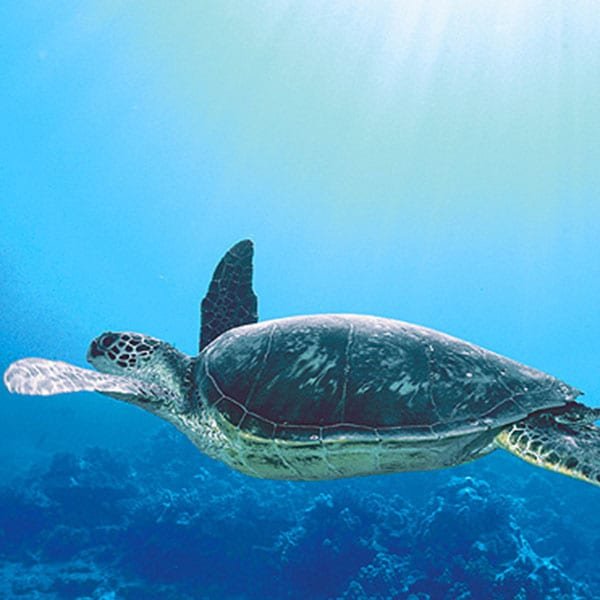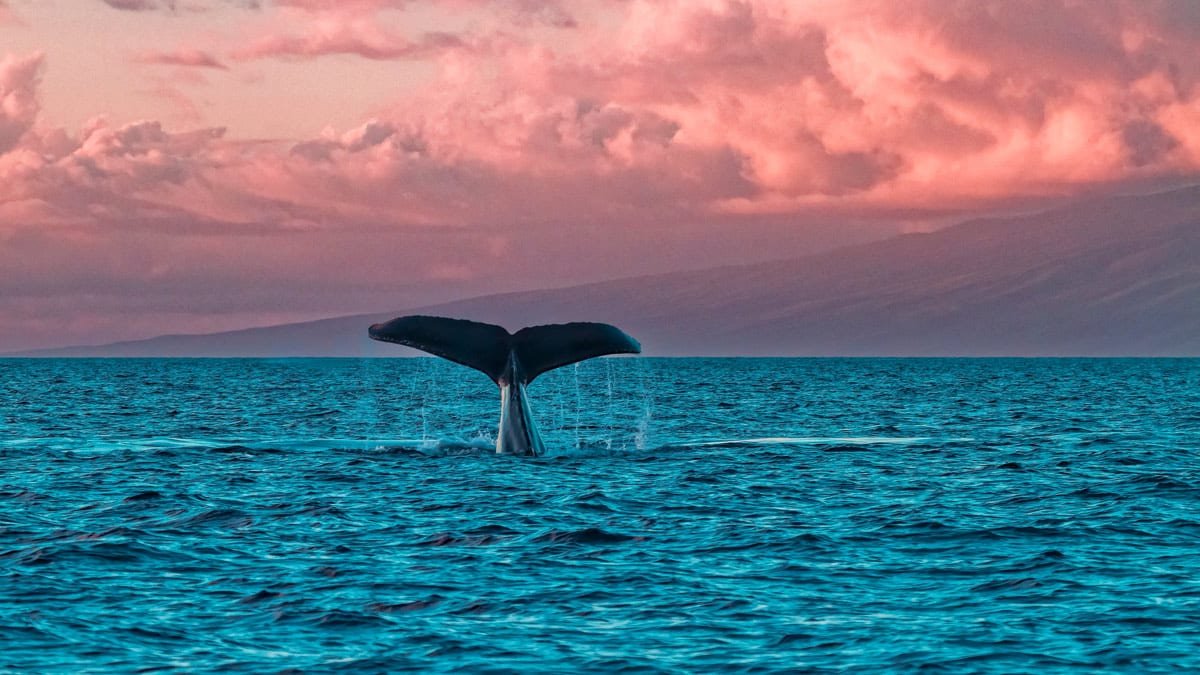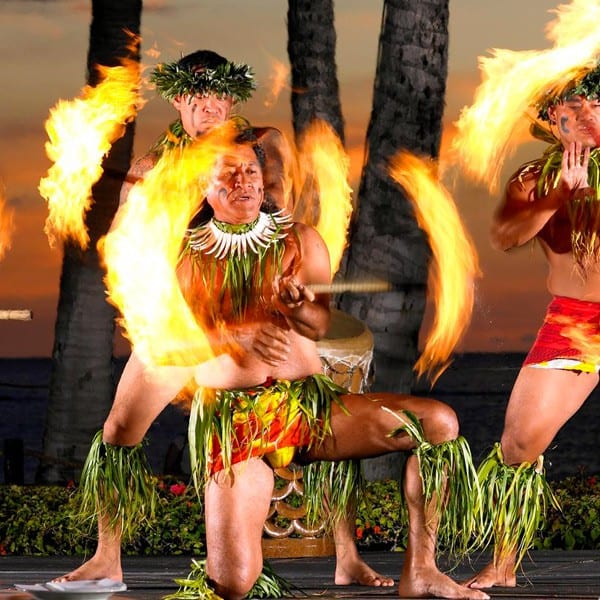A trip to Maui is not complete without time spent at the Haleakala National Park. Although there are several natural wonders to see throughout Hawaii and specifically to experience on the island of Maui, this national park should be at the top of your list. It has everything you came to Maui to see and so much more!
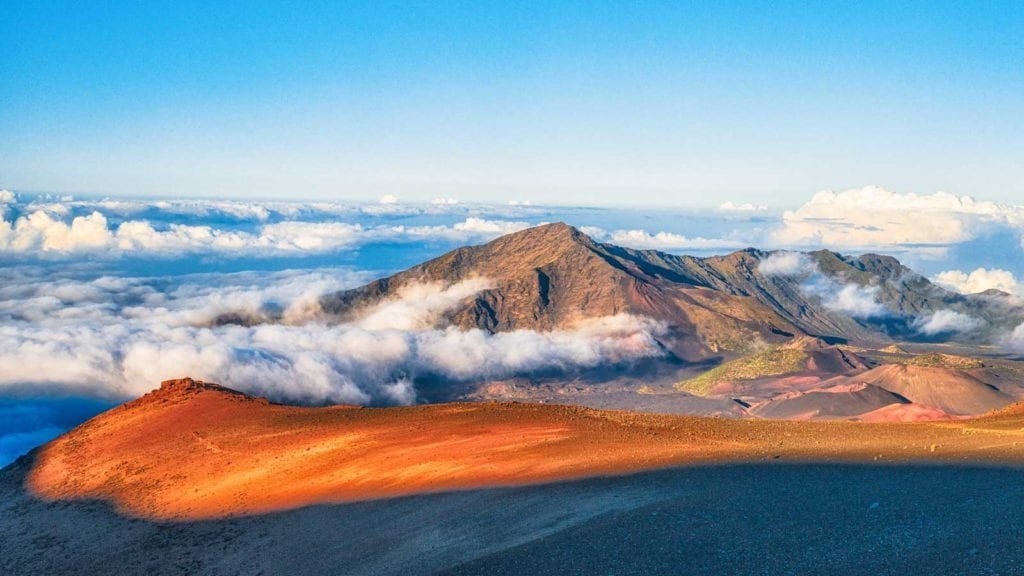
Haleakala National Park is one of Maui’s national treasures. Home to the dormant volcano Haleakala, whose name means “House of the Sun” in Hawaiian, it has one of the largest volcanic craters in the world. As well as being home to Hawaii’s endangered geese, there are two breathtaking outlooks -the Leleiwi and the Kalahaku that offer stunning views of the Haleakala Crater and continue on across the West Maui mountain range. Established as an International Reserve in 1980 to protect the Haleakala Crater, the park is approximately 33,265 acres large with 24,719 acres that are complete wilderness. The crater itself is filled with red cinder cones and black lava beds which are impressive in their own right. However, the Haleakala National Park has so much more than just views of the crater to offer. Read on to learn more!
The Beginnings of Haleakala Volcano
The Haleakala Volcano first rose out of the sea approximately 1 million years ago. As is typical with volcanic eruptions, continuous lava flows eventually built up the land that now surrounds it. Eventually, the mountain grew so large that it began to host its own weather systems. Rain and wind created erosion forming the landscape we see today.
What Type of Volcano is Haleakala?
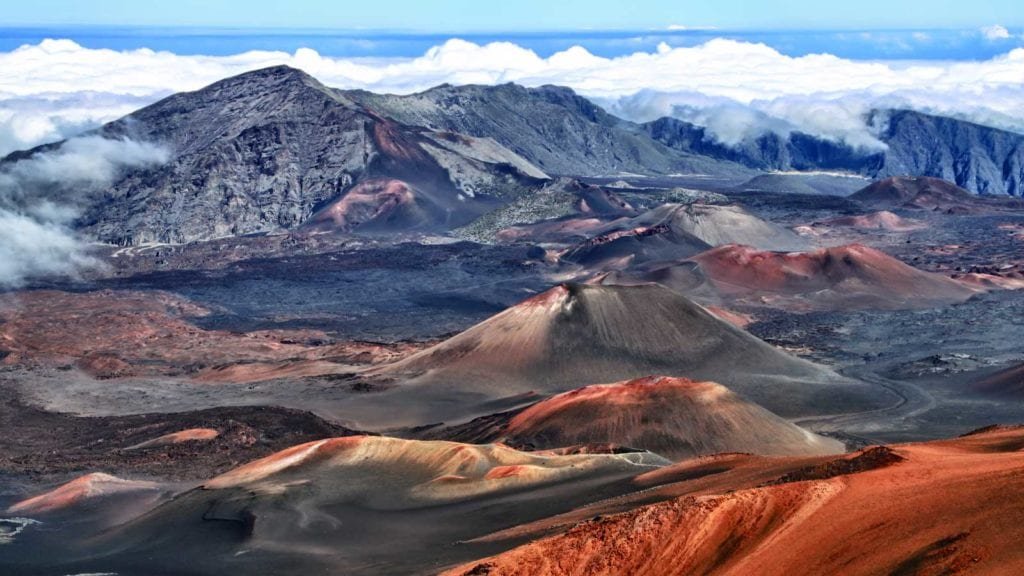
It is interesting to note that the inside of the Haleakala Crater is not even an actual crater! From the summit it is possible to see that it is actually two different parts of the volcano that actually collapsed into each other, thereby creating a valley. As the volcano continued to erupt, it formed the cinder cones that are visible on the crater floor. Thousands of years of erosion made beautiful colors that seem to flow naturally like water down the crater rim. This makes for beautiful scenes when hiking and camping around the crater.
How Many People Visit the Park Each Year?
Haleakala National Park is a major tourist attraction for Maui and it attracts approximately 1.45 million people annually. Despite its beauty and the magical draw that it has, one of the very first questions that are often asked is concerning its last known eruption date. But not to worry! The Haleakala Volcano has not erupted since sometime between 1480AD and 1600 AD.
Best Ways to See Haleakala Crater and Haleakala Summit
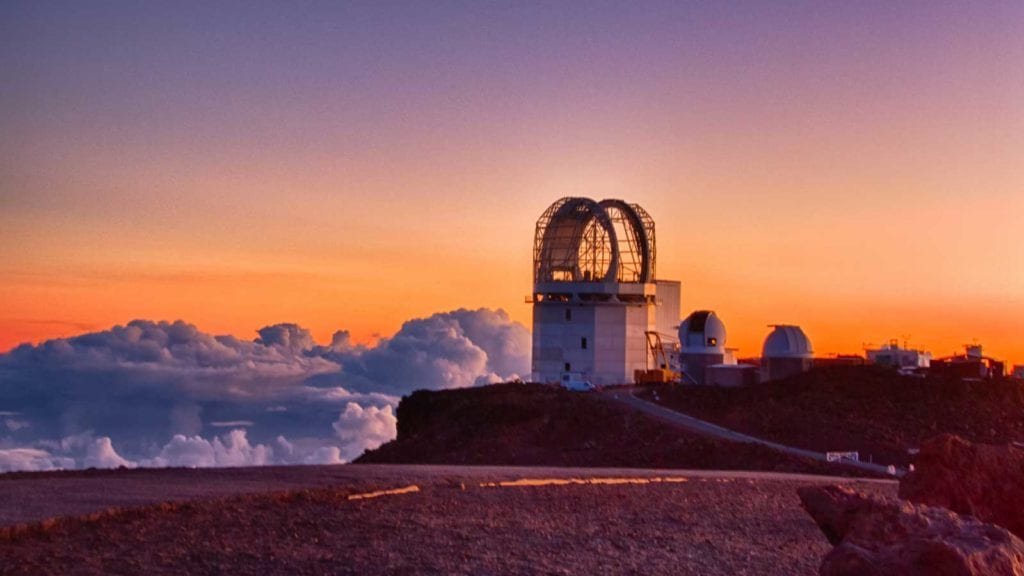
The best way to see everything that this natural wonder has to offer is to go all the way up to the summit. Either by hiking or by driving, both will offer spectacular views and great photo opportunities. Seeing the volcanic views as close up as possible is the goal. So, even if you do choose to drive, make a point of stopping to get out and look around at more than just the summit. You will travel through multiple climate zones and notice how the landscape changes the higher you go. Just as many climate zones as there would be if you drove from Canada to Mexico! This scenic drive is thirty-seven miles from sea to summit, making it the world’s highest elevation gain within the shortest distance on the planet.
Once at the Haleakala Summit, there are rangers at the visitor center who can explain the geology of the volcano. It is both an informative and spectacular experience. The viewpoint offers clear views of the spectacular cinder cones left behind by the last eruption.
Haleakala Weather
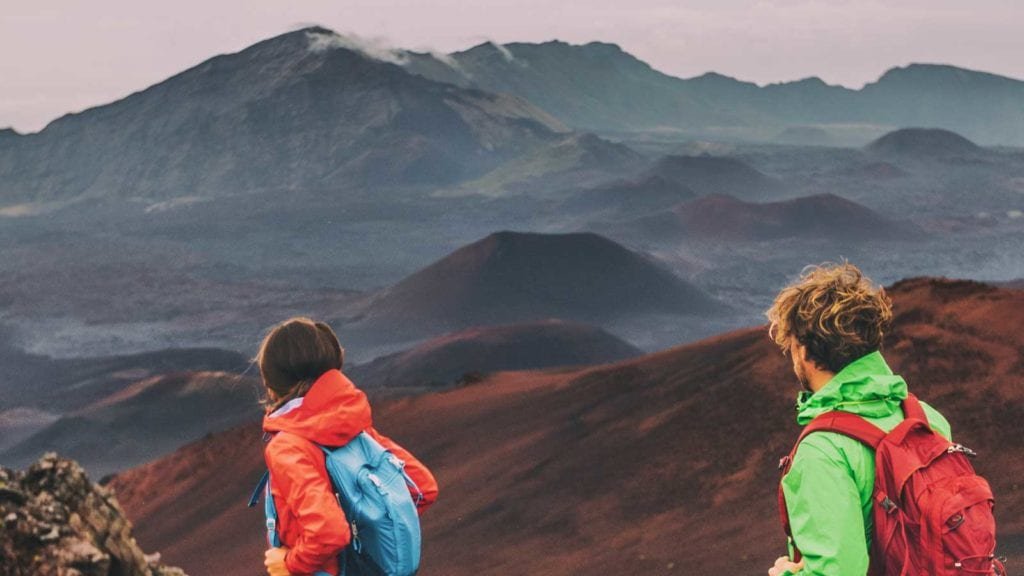
Of course, being at such a high elevation it is understandable that the weather at the Haleakala Summit is rather unpredictable. Therefore, dressing appropriately is crucial. Make sure to bring extra clothes and have options to add layers and remove them. As you travel up to the summit and back down again.
The weather at the Haleakala Summit can range between 40F and 65F. Below freezing is also possible at pretty much any time of year. You will experience intense changes between bright sunlight, heavy clouds, rain, high winds, and it even snows on Haleakala sometimes! Just remember that light rain and wind at sea level will be a full-blown storm at 10, 000feet in the air!
Sunrise and sunset are popular times to be at the summit and if the weather and sky are clear, you can even get lucky and see a sunset with a moonrise at the same time!
It is also worth mentioning that visitors with respiratory issues and pregnant women may find the air too thin at the summit. Always check with your doctor if you are unsure if this will be a safety issue for you.
Hawaiian Mythology and Haleakala
The early Polynesian settlers that came to the island, declared the mountainous area to be sacred and named it Haleakala. The meaning in Hawaiian is “House of the Sun” and the legend says that the demi-god Maui would lasso the sun to make it slow down its travels across the land and warm the people. Therefore, it is the volcanic mountains and its crater that are seen enablers of good weather and good fortune on the island of Maui.
This is why within the Haleakala National Park land there are numerous archaeological sites that are remnants from ancient times. Sacred places where tools were found, quarries were used and even places were religious ceremonies took place, are all still intact and there for visitors to see and experience.
Best Things to Do at Haleakala

The list of things to do at the Haleakala National Park is extensive and many of these activities offer amazing views of the island while enjoying both the summit and valley. Although it is a two-hour drive up to the summit, the road traveled will definitely offer you a scenic trip. However, it is not the only way! There are many other ways to experience the park and the following are among the most popular.
Sunrise or Sunset
Get up early and check out the amazing Haleakala sunrise. Reservations with the park are required and can be made at www.recreation.gov. Or, make an evening out of enjoying the sunset from one of the pull-off areas.
Stargazing
With the new night sky program that just began, you can enjoy a guided tour of the night sky by a park ranger. Or you can do a guided tour with Maui Stargazing.
Hiking
Many hiking trails weave their way through the crater, giving the hiker an incredible experience of hiking on what feel’s like a foreign planet. Maui has many great hikes and Haleakala has some of the very best.
Biking
For the serious athletes who want to bike up the mountain for those who prefer a leisurely cruise down the volcano, it’s a great place for cycling.
Camping
Hosmer’s Grove is a beautiful bird sanctuary that also has limited camping available. You can also reserve cabins in the crater for overnight backpacking.
Helicopter Ride
Take one of these helicopter rides to witness Haleakala National Park in all of its glory by getting the bird’s eye view.
Sunrise Experience

If you only do one thing when you visit Haleakala, you’re going to want to make sure that it’s a sunrise experience. Watching the sunrise from such a high vantage point above the clouds is an experience like none other. It’s best to book a tour in advance as this is a very popular activity and the amount of people is restricted. And it’s also a very early morning! The visitor’s center is just below the 10,000-foot high summit and you’ll want to arrive there at least thirty minutes before the sunrise begins. This could be as early as 5:30 AM in the summer months. Keeping in mind that the drive up is about two hours, this makes for a rather early morning!
The drive up and down from the summit is just as much part of the magical experience as the sunrise itself. With an experienced driver, you will have the luxury of enjoying your surroundings and watching as your bus seems to mystically ascend or descend depending on your direction, into the clouds.
Haleakala makes up most of the island of Maui and seeing it from the summit, makes it easy to understand why the ancient Hawaiians felt this place to be sacred. This view may just be the best one you’ve ever seen! So don’t miss this opportunity! Taking photos and videos in a place that seems to be on top of the world is definitely a once in a lifetime not to be missed experience.
Bike The Volcano

After your sunrise moment, you can choose to bike down the volcano-the longest downhill bike tour in the world! There are many different bike tour options but in general, it is about 23 miles down from the summit. Some tours will pick you up at your hotel and drive you up before biking down, others begin at the summit. You can choose to go with a tour group or even bike it alone. However, not all trails are equal! So, make sure that the trail and tour that you choose match your cycling skills.
On an environmental level, you can also enjoy the flora and fauna that make their home on the volcanic soil. From the endangered bird -the nene to the large variety of plants, Haleakala National Park offers home and refuge to many plants and animals that are native to the area. Always be respectful of the natural wildlife and be sure not to touch or move any of them to different spots. Each has their home in this sacred land and must not be disturbed.
At Haleakala National Park, you will experience the absolute best of Maui. The mystical beginnings and breathtaking views at the Haleakala summit, the natural beauty of the Haleakala crater and even the unpredictability of the Haleakala weather. Maui was created in mysticism and Mother Nature’s magic and everything about Haleakala confirms that. Part of the beauty is that there so many ways to enjoy this national treasure. Although the best part is the view, there are ways for people of all ages and abilities to enjoy everything Haleakala has to offer. Outdoor enthusiasts can camp out and take it all in from sunrise to moonrise. Nature lovers can hike, bike and take time to stop and appreciate the flora and fauna of the region. No matter which category you fall into, there is a way for you to enjoy the beauty of the Haleakala National Park. So make sure to book your trip to Haleakala today!


